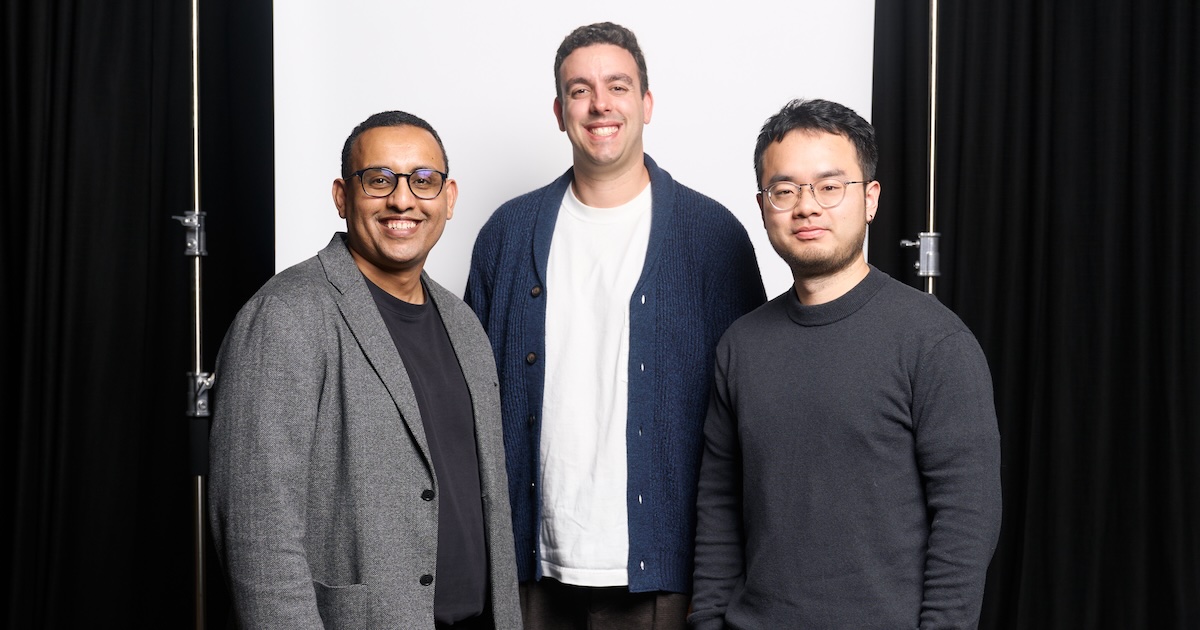
From SaaS to SaiS: A River of Inquiry into how AI is unlocking vertical SaaS
Lede image courtesy of Leonardo AI
TL;DR
The last decade has been the ‘heyday’ for horizontal SaaS, and vertical SaaS has been comparatively quiet. What has held vertical SaaS back is simple: bad customers. Go-to-market motions in vertical SaaS have been stuck in clunky enterprise mode, while horizontal SaaS has consistently cracked product-led growth that has underpinned rapid and efficient scaling.
AI is an unlock and has reinvigorated vertical SaaS, enabling now the same fast-scaling, light-touch, bottoms-up selling to individuals that has propelled horizontal SaaS over the past decade. AI has essentially turned ‘bad customers’ into good ones, and created a completely new category of ‘vertical SaiS’ (software-AI-as-a-Service).
We are excited by the opportunity and have recently funded three new ‘vertical SaiS’ companies, who join others in the portfolio such as Heidi (for clinicians) and Annalise (for radiologists).
We are pumped to meet who is next. If that is you, I’d love to connect - get in touch with me on Twitter/X or Linkedin.
Vertical SaaS takes a back seat
The last decade has been the ‘heyday’ for horizontal SaaS. Horizontal SaaS covers cloud software solutions that target business users broadly, regardless of industry (eg. Slack, Zoom, Hubspot).
Vertical SaaS, on the other hand, has taken a back seat. Vertical SaaS covers software catering to a particular industry niche or vertical. Notable winners have emerged - Procore for construction, Toast for restaurants, Veeva Systems for life science, or Benchling for biotech, to name a few.
Winners in vertical SaaS have been fewer in number and comparatively smaller in scale. From 2013 to 2021, 80% of SaaS IPOs were horizontal versus vertical and those companies IPO’d at a greater average scale (revenue and market cap). Horizontal companies have historically traded at a slight EV/revenue premium too.

We see this dominance locally too. Most of our antipodean SaaS success stories have been horizontal - eg. Atlassian (US$43B market cap), Canva ($27B), Xero ($13B), SafetyCulture (private), CultureAmp (private), etc - with fewer and smaller vertical winners to point toward (eg. Aconex, which exited to Oracle for ~$1.1b).
A curse of “bad customers”
What has held vertical Saas back? Answer: bad customers.
“Good customers” are ones that are easy to reach, see the value of a product quickly, have fast sales turnarounds, are comfortable with product-led growth motions (buy online with a credit card, self-implement, grow and upsell overtime), are not price sensitive, and are not demanding (don’t require bespoke product integrations, customisations, configurations, etc).
In the past, most companies selling industry-specific solutions have not enjoyed these characteristics in their buyers (ie. hospitals, construction companies, law firms, architecture firms, manufacturers, ad agencies, etc).
These buyers have tended to be hard to reach (door to door sales, conferences), slow to move with complex decisioning processes, price sensitive, demanding of customisations, and reliant on consulting support throughout. Growth can be a slog and sales efficiency a drag.
On the contrary, horizontal SaaS companies have managed to unlock “good customers” with consistency, underscored by efficient bottoms up, product-led growth motions.
The AI unlock for vertical SaaS
AI is an unlock for vertical SaaS for two reasons.
First, AI magnifies the value proposition of vertical software.
Pre-AI, the value proposition of vertical SaaS predominantly focused on coordinating human workflows. Products were practice management solutions, CRMs, and documentation systems where value was achieved only in a “multiplayer mode” at the enterprise level and was expressed by digitising processes, replacing spreadsheets, improving collaboration, and better managing documents. Productivity gains reached ~10% at best.
Post-AI, the value proposition of vertical SaaS focuses on replacing human workflows through automation, with productivity gains often expressed in the more meaningful 30-90% range. For example, the Chief Information Officer of Commonwealth Bank recently claimed that their entire engineering team was operating with 30% greater efficiency with the use of Github Copilot, a very compelling outcome for a ~2 year old product.
When value propositions increase, so too do ARPUs (Average Revenue Per User), assuming effectively deployed ‘value-based pricing’.
And expanded ARPUs help to open up market opportunities that would have been considered too niche before. Take Evenup, an AI solution targeted at personal injury lawyers, which has gone on to raise over USD $70m in 3 years since founding.

Second, AI is unlocking bottom-up sales motions.
AI features deliver unique value to individual users in a ‘single player mode’, without products needing deep configurations by organisations or the adoption and collaboration of team members. ‘Time to wow’ is often measured in minutes.
And this in turn opens up the possibilities for new product-led growth strategies targeted at individual end user professionals, versus the clunky enterprise sales motions of the past. Microsoft recently reported 84% of Australian workers are using gen AI in the workplace, and there is even a BYOAI acronym gaining steam, referring to the trend for employees to ‘Bring Your Own AI’ to work.
Take health care as an example. The primary software solutions of the past (eg. Electronic Health Record platforms or Practice Management Solutions) have been predominantly sold by targeting central buyers at clinic groups, hospitals, and medical systems with long sales cycles, complex configurations, and arduous implementations.
Enter Heidi Health, who launched an AI scribe for clinicians that is growing rapidly through pure, bottom-up individual adoption with an enterprise upsell. They have taken the best go-to market motion we have seen in horizontal SaaS and are using it to open up one of the toughest markets to crack.
And this is consistent across other verticals. AI has turned the ‘bad customers’ of vertical SaaS into ‘good customers’, and enabled a velocity of growth that was not possible before. AI has unlocked ‘vertical SaiS’.
“We’re going to steamroll you”
But doesn’t all the value accrue at the foundational model level?
Won’t Open AI just bulldoze vertical application companies as they roll out improvements?
There is an “OpenAI killed my startup” meme doing the rounds. It started in November 2023, triggered by Open AI’s DevDay announcement that covered the launch of GPTs and Assistants, and gained steam when OpenAI launched Sora in Feb 2024 which immediately cast a shadow over all AI video startups.
On a recent 20VC podcast, Harry Stebbings put it to Sam Altman, “I’m not investing in any application layer AI companies because respectfully we’ve seen OpenAI come out with new products and it’s like “well that killed a whole industry”.”
But Altman responded:
“[t]here are two strategies to build on AI right now. There’s one strategy which is to assume the model is not going to get better and then you kind of like build all these little things on top of it there’s another strategy which is to build assuming that OpenAI is going to stay on the same rate of trajectory and the models are going to keep getting better at the same pace.
[a] lot of the startups have been built in the former category… and we have a mission, and we’re going to steamroll you.
But there is a giant set of startups who will benefit from the models getting way better, and if you build those and the AI progress keeps going… for the most part, you’ll be really happy.”
Consider how things have played out through previous infrastructure cycles. When cloud computing arrived in the mid 2000s, three infrastructure players emerged to dominate (AWS, Azure, GCP), while thousands of application companies thrived on top of them (Salesforce, Hubspot, Atlassian, etc).
In the years since, about the same amount of economic value (~$2 Trillion, measured by combined market cap) has been created across the top 100 publicly traded application companies as across the three core compute providers.
When mobile emerged in the late 2000s, we saw two platforms dominate (iPhone and Android) and thousands of applications thrive above them (TikTok, Bumble, Spotify, etc).
We expect the same to happen here - a handful of core ‘N of 1’ foundational model providers will settle in to dominate and a thriving application ecosystem will form on top, with a similar or greater degree of economic value but spread across a significantly broader set of players.
You cannot underestimate the value of owning the customer relationship and building a product that is deeply tailored to and embedded into their workflows.
Who will be “really happy”?
We are seeing a number of companies find their stride at the application layer.
But, to steal the language of Altman, who will be “really happy”?
We recently shared some thoughts on the emerging 7 sources of moat in AI and we are seeing promising vertical SaiS companies successfully executing these strategies. Early performers seem to consistently demonstrate three characteristics:
- A narrow ICP definition and deep customer empathy
The best vertical SaiS companies tend to begin with a tightly defined ICP (Ideal Customer Profile) and land with a singular and highly pronounced “wedge” of a pain point. They do not try to do too many things for too many customers. Founding teams have a deep understanding of their customer and are able to translate that into a UI and product roadmap that has clarity.
An interesting case study is Jenni AI, which started off life as a ‘horizontal’ marketing copy copilot similar to Jasper AI. In 2022, when chatGPT launched, Jenni pivoted to become a “copilot for college students” with a suite of academic-specific tools such as auto-citation, LMS integrations, essay-writing support, research paper ingestion, etc. With its renewed focus, Jenni is now generating north of US $5m ARR and growing ~5x yoy.
- Velocity of product development and rich product roadmap
Most verticals right now are blue ocean opportunities. Incumbent software providers are slow to act and have attached themselves to business models (“business debt”) and product architectures (“tech debt”) that make it hard to pivot.
The most promising founders know this and are shipping product fast to get and stay ahead. They are product obsessed and have product roadmaps that are clear and rich in features.
- Robust and flexible AI infrastructure strategy
The best companies are thinking deeply about what is coming down the line and setting up their infrastructure stack to be highly adaptable to future developments in AI models and architectures. They are constantly looking for opportunities to improve the performance of the AI through prompt engineering, fine-tuning, RAG, model triaging, and model evaluation techniques, and ways to capture and repurpose data and optimise infrastructure costs for an edge.
____________________
We are excited by this emerging ‘vertical SaiS’ theme at Blackbird.
We have recently funded three new ‘vertical SaiS’ companies that we look forward to talking more about, and who join others in the portfolio such as Heidi (for clinicians) and Annalise (for radiologists).
We are pumped to meet who is next. If that is you, we’d love to connect - say hi on Twitter/X or Linkedin.











